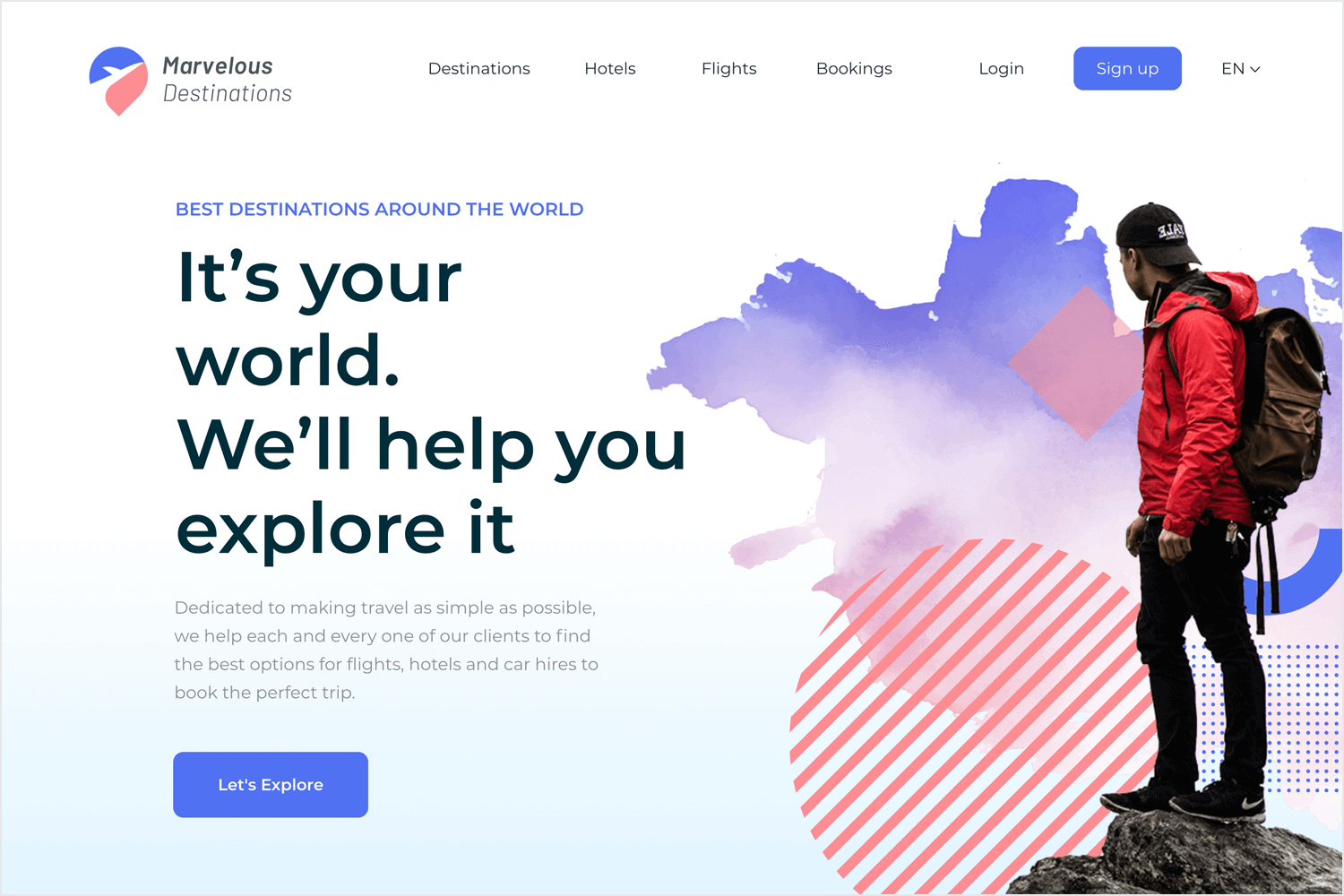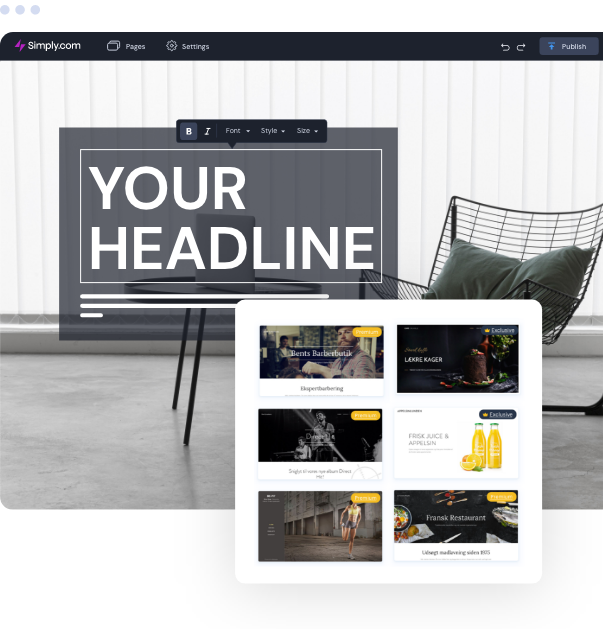Building User-Friendly Interfaces: Best Practices in Website Design
Building User-Friendly Interfaces: Best Practices in Website Design
Blog Article
Recognizing the Role of Responsive Design in Modern Internet Site Advancement
In today's electronic landscape, receptive layout is no much longer a deluxe yet a requirement in website development. The value of responsive design expands beyond individual experience-- it is additionally a crucial aspect in search engine optimization and ease of access.
Relevance of Responsive Style
In today's electronic landscape, the relevance of receptive layout in internet site advancement can not be overemphasized. As customers progressively rely upon a selection of devices-- ranging from desktop to tablet computers and smartphones-- guaranteeing a seamless user experience across all platforms has actually ended up being vital. Responsive style enables internet sites to instantly change their format and functionality based on the screen size and positioning of the device being made use of. This versatility improves individual engagement and satisfaction by providing constant access to web content without requiring manual changes such as scrolling or zooming.
Additionally, responsive style is essential for search engine optimization (SEO) Online search engine like Google prioritize mobile-friendly web sites in their search engine result, meaning that a receptive layout can considerably influence a site's presence and ranking. This optimization not just improves the individual experience but additionally drives natural website traffic and raises the possibility for conversion and revenue generation.
In enhancement, receptive layout supplies organizations an economical remedy by getting rid of the need for multiple versions of an internet site. By streamlining web growth procedures and decreasing upkeep initiatives, business can allot resources a lot more successfully, ultimately resulting in enhanced roi. Thus, responsive layout is indispensable in today's affordable digital atmosphere.
Crucial Element of Responsive Style
To properly apply responsive style, it is necessary to concentrate on numerous crucial elements that make certain optimal performance and individual experience throughout varied tools. Among the basic parts is the adaptable grid format, which allows developers to produce fluid grids that immediately adjust to different display dimensions. This makes sure that web content keeps symmetry and readability, despite the gadget being utilized.

Furthermore, touch-friendly navigation is vital for responsive layout. Applying conveniently tappable switches and intuitive motion controls improves usability on touchscreen devices. Prioritizing efficiency optimization is additionally critical, as it boosts filling times and reduces bounce prices, specifically on mobile connect with variable speed.
Lastly, employing a mobile-first strategy makes certain that the layout is at first optimized for smaller sized screens before increasing to fit desktop computers. This method ensures that essential capability and aesthetics are maintained throughout all platforms, inevitably improving the total customer experience.
Effect On Customer Interaction
Responsive style substantially affects customer involvement by boosting accessibility and complete satisfaction across various devices (Website Design). By guaranteeing that a web site's design adapts effortlessly to various display sizes, responsive layout enables users to access content effortlessly, whether they are using a desktop computer, tablet, or smartphone.
Moreover, receptive layout adds to quicker page loading times, which is essential for retaining user passion. Individuals are much more inclined to desert a site if it takes too lengthy to tons, especially on smart phones. By enhancing performance for varied systems, responsive layout lessens loading hold-ups, keeping users involved and minimizing bounce rates.
Search Engine Optimization Perks of Responsive Style
While enhancing customer experience is a main goal, receptive design additionally plays a critical function in improving an internet site's search engine optimization (SEARCH ENGINE OPTIMIZATION) Online search engine, notably Google, focus on mobile-friendly websites, therefore rewarding those that use seamless experiences throughout devices. Receptive design makes sure that a website adapts to different screen sizes, eliminating the demand for different mobile and desktop variations. This versatility not just enhances customer experience but likewise reduces the danger of replicate web content, which can negatively affect search engine optimization rankings. visit this web-site
Furthermore, responsive design aids in faster page packing times, an essential consider SEO. Online search engine prefer web sites that fill promptly, identifying that individuals are extra most likely to desert websites that take also lengthy to present. By using receptive layout, programmers can maximize photos and Visit Your URL simplify material, making certain reliable filling and boosted internet search engine positions.
In addition, a natural URL structure across devices streamlines the indexing procedure for internet search engine, boosting crawl performance. This harmony in URLs strengthens a site's authority and trustworthiness, resulting in improved visibility in search engine result. In recap, responsive design is not just a fad however an essential component of search engine optimization method, guaranteeing web sites are both easy to use and search engine suitable.
Carrying Out Responsive Layout Methods
In the realm of modern internet development, implementing receptive design strategies belongs to crafting a functional canvas that changes flawlessly to different screen measurements. Central to this approach is using flexible grid-based formats, which utilize loved one systems like percentages instead than fixed systems such as pixels. This ensures that web content ranges properly throughout devices. One more important method entails utilizing media queries, which allow programmers to apply various designs based on the features of the device, such as elevation, size, and resolution.
Responsive images and media are also important elements. By using methods like CSS media inquiries and the HTML 'image' component, programmers can offer suitably sized photos based upon the customer's tool, maximizing lots times and boosting individual experience. Furthermore, the consolidation of liquid typography makes sure that text is readable and visually pleasing on any type of screen, accomplished through scalable units like 'rem' and 'em'.

Verdict
Responsive layout comprises a crucial element of modern website advancement, considerably boosting customer experience across a series of gadgets. By including versatile designs, scalable images, and touch-friendly navigation, it increases user engagement and optimizes website efficiency. Responsive layout is essential for Search engine optimization, as it straightens with search engines' preference for mobile-friendly sites, thereby increasing presence and natural website traffic. Inevitably, executing receptive design strategies makes certain enhanced availability and usability, providing web sites more reliable and user-centric.
To properly implement receptive layout, it is vital to concentrate on several crucial components that ensure ideal capability and user experience throughout varied devices.Responsive style significantly influences individual involvement by improving access and complete satisfaction throughout numerous gadgets. By making sure that an internet site's layout adapts perfectly to various display dimensions, responsive design permits users to accessibility content effortlessly, whether they are making use of a tablet computer, smart device, or desktop computer .While boosting customer experience is a key objective, receptive layout additionally plays an important function in enhancing a web site's search engine optimization (SEO)Receptive style makes up a necessary element of contemporary site development, considerably enhancing user experience throughout an array of tools.
Report this page